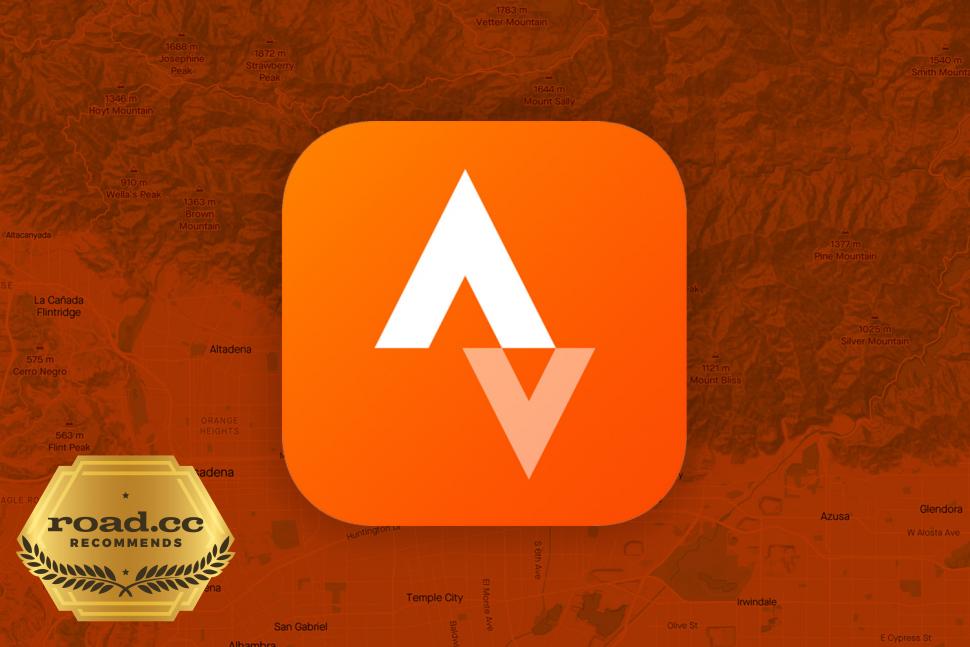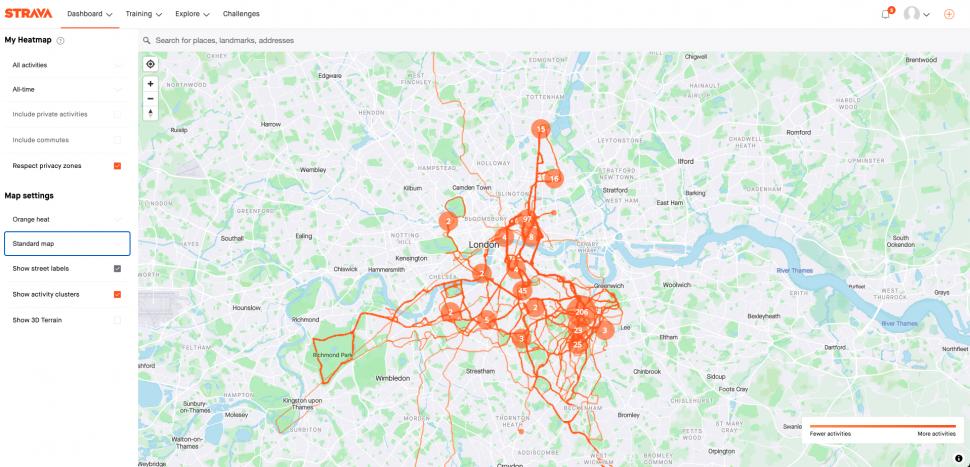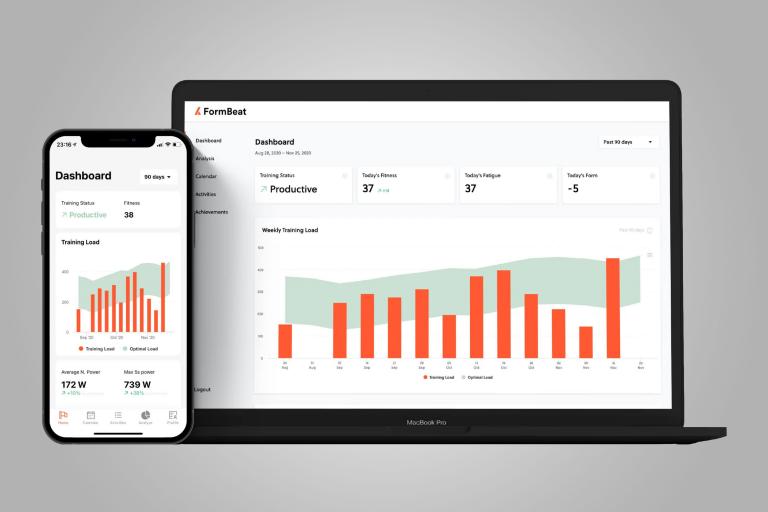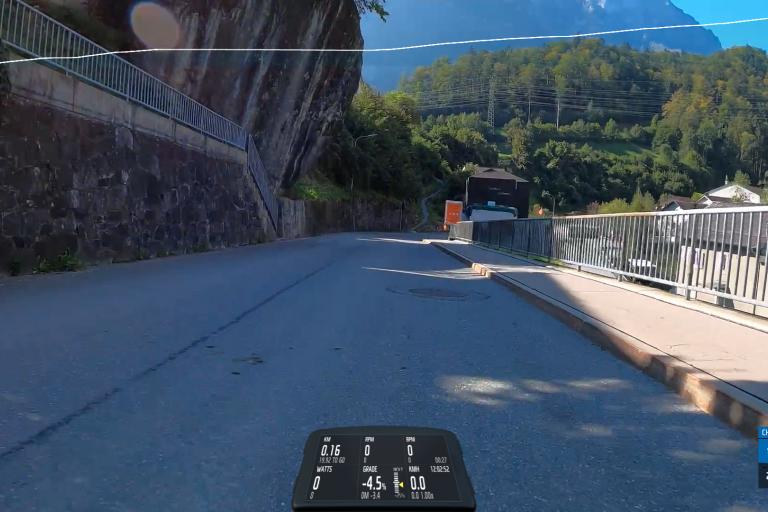- News
- Reviews
- Bikes
- Accessories
- Accessories - misc
- Computer mounts
- Bags
- Bar ends
- Bike bags & cases
- Bottle cages
- Bottles
- Cameras
- Car racks
- Child seats
- Computers
- Glasses
- GPS units
- Helmets
- Lights - front
- Lights - rear
- Lights - sets
- Locks
- Mirrors
- Mudguards
- Racks
- Pumps & CO2 inflators
- Puncture kits
- Reflectives
- Smart watches
- Stands and racks
- Trailers
- Clothing
- Components
- Bar tape & grips
- Bottom brackets
- Brake & gear cables
- Brake & STI levers
- Brake pads & spares
- Brakes
- Cassettes & freewheels
- Chains
- Chainsets & chainrings
- Derailleurs - front
- Derailleurs - rear
- Forks
- Gear levers & shifters
- Groupsets
- Handlebars & extensions
- Headsets
- Hubs
- Inner tubes
- Pedals
- Quick releases & skewers
- Saddles
- Seatposts
- Stems
- Wheels
- Tyres
- Health, fitness and nutrition
- Tools and workshop
- Miscellaneous
- Cross country mountain bikes
- Tubeless valves
- Buyers Guides
- Features
- Forum
- Recommends
- Podcast
review
 2021 Strava app
2021 Strava app£47.99
VERDICT:
A do-all and effective platform that helps with training, adds a social element, and gamifies your cycling
Segments is a great feature
Route planning is slick and seamless
Social elements of Strava still as strong as ever
Guided training elements not as good as others
Weight:
0g
Contact:
www.strava.com

This product has been selected to feature in road.cc recommends. That means it's not just scored well, but we think it stands out as special. Go to road.cc recommends
At road.cc every product is thoroughly tested for as long as it takes to get a proper insight into how well it works. Our reviewers are experienced cyclists that we trust to be objective. While we strive to ensure that opinions expressed are backed up by facts, reviews are by their nature an informed opinion, not a definitive verdict. We don't intentionally try to break anything (except locks) but we do try to look for weak points in any design. The overall score is not just an average of the other scores: it reflects both a product's function and value – with value determined by how a product compares with items of similar spec, quality, and price.
What the road.cc scores meanGood scores are more common than bad, because fortunately good products are more common than bad.
- Exceptional
- Excellent
- Very Good
- Good
- Quite good
- Average
- Not so good
- Poor
- Bad
- Appalling
Strava Premium adds a degree of gamification to your rides that almost everybody involved in cycling is aware of. The route planning is simple and effective, plus the quick synchronisation with other devices is a really nice touch. The training elements are good, although not as in-depth as TrainingPeaks.
Strava is one of those platforms that has become synonymous with cycling and running. It has become a bit of a running joke for amateur athletes to say, if it's not on Strava, did it really happen?
I've been using it on and off for several years, specifically the KOM elements where I could target certain routes to see if I could do them faster than other people in my area. Until last year I never felt the need to pay for the premium service, but then in May 2020 Strava made the decision to cut back the free version and remove segment leaderboards, effort analysis, and route creation.
I'm not complaining – Strava provides a service, and if you don't pay for it then you shouldn't complain when you no longer have access to it – but what about the service you are paying for now, when you go premium?
Routes and maps
Although Strava is best known for its gamification elements, the routing is perhaps the feature I've found most useful on the premium version.
There are a few elements to it, but in terms of usability and usefulness, the planning and multi-device upload has impressed me most.
You plot a route (I did this on my laptop), and as soon as it saves it uploads to all other devices with Strava on them, straight away. In my case this is a Garmin 830 and my phone. From here it takes seconds to open the route and start following it.
Compared with the kind of hoops I often jump through to get routes on my bike computer, it's a breeze; no more GPX downloads and uploads needed.
Creating the routes on a computer is just a case of finding the start point, then where you want to go to, then choosing the options you want for that route: whether you want to run, ride, or walk, whether to follow the most popular or most direct routes, the amount of elevation, and the surface type. From there, Strava creates the route for you and all you need to do is give it a name.
Another cool feature is the heatmaps, where you can see the most popular routes on the map, either from your own rides or for all Strava users. I found this really useful when I was away from home at my in-laws – there is so much great riding near them that it's difficult to fit everything in; using Strava I could see, for example, the most popular climbs in the area.
Segments
Segments is the feature that originally drew me to Strava and is the one that keeps people coming back. The idea that you are not just challenging yourself when you're out riding alone, but trying to beat somebody else, was the first major attempt to gamify cycling and is still the most popular. It has even made it into popular vocabulary, with KOM being something that most cyclists will fundamentally understand through their use of the app.
As Strava has grown, so have the number of segments available. Within 200m of me in a relatively quiet corner of south London there are more than 10 segments; in some of the more popular cycling spots you can have hundreds within an even smaller area. To put it into context, even when riding around the most remote areas without planning to target certain segments, I haven't uploaded a ride to Strava without hitting one for at least eight years.
Segments still works pretty much as it always has, with the ability to judge yourself against others and against your previous efforts. There was an uproar when Strava decided to exclusively give premium subscribers access to this, but with it being the most popular element of the app, and the relatively small uptake of the previous premium service, it's hardly a surprise.
> 7 reasons to try Strava — boost your rides by bagging segments
Non-premium users still show up on the leaderboards and can see whether they've beaten their own records, but are unable to compare themselves to others.
A relatively new element of Segments that I really like is that you can 'star' specific segments that you're targeting on a ride, and if you're using a compatible computer or phone it gives you a heads up that you're approaching it, and then tracks your progress against your best time and against the KOM. It works seamlessly, and means you can prepare yourself to really attack the targeted segment.
Social
One of the features that sets Strava apart from other online fitness platforms is that it acts and feels more like a social media platform than something you're using to improve your fitness or performance.
Strava has definitely chosen to go down this route with things like group challenges, where you set goals and timeframes then challenge a group of friends to see who can achieve the goal first, and the Kudos function, which is essentially liking an activity. Strava has recently added the 'Kudos bomb' where you can give kudos to everybody who's taken part in a group activity.
Another feature is Beacon (which is available for all users, not exclusively premium subscribers), which allows you to share your location with specific people so they can see where you are during a ride or run. This is predominantly a safety feature that can be used via your phone or a compatible bike computer. I shared my location with my wife during a couple of rides and runs and it works perfectly well, in much the same way as sharing your location on WhatsApp or similar.
To be honest, when Strava made the shift with its premium model I didn't think the social elements of the app would still be as effective, but in reality they are just as strong as when there were more features on the free version. This is a really good thing to see, and I still got a little kick when I got a notification on my phone telling me somebody had given me kudos for an activity.
Training
Strava isn't designed around improving performance or fitness directly. It certainly helps to get you out on your bike, riding harder, and challenging yourself, but in terms of personalised training for specific gains, there are other dedicated platforms that do this better.
Strava has 12 four-week plans that you can choose from for a cyclist, or four if you're a runner. These are all focused around specific goals within three areas: sprinting, climbing, and indoor. This will be good enough for most people, but if you wanted to specialise in something (for instance a certain type of TT course), you would need to devise a plan yourself.
One thing that Strava does particularly well, which helps with this, is recording and displaying data in a way that makes it easy to track progress. For instance, if you have a particular route that you ride a lot, you can track your progress on it over time, with performance metrics overlaid with one another so you can compare them. Even if you don't use a power meter on your rides, you can track your power through Strava's power estimations; these will never be as accurate as if you were using a power meter, but it gives you the ability to do some basic power analysis.
If you do use a power meter then you can get even more data with Weighted Average Power, Training Load, Ride Intensity, and Power Curve all being shown and compared.
Part of training is making sure that you are not overtraining and increasing the risk of injuries, and Strava does a good job of showing this with the Fitness and Freshness section, which allows you to track your fitness, fatigue, and form. It means you can always see when you should be training and when you should be resting.
Overall, training is good and a marked improvement over what it used to be. There isn't the same level of guided training options you get with other online platforms, but the data you get here can certainly be used to improve your fitness and performance.
Pricing
Strava Premium costs £47.99 per year if paid annually, or £6.99 per month. It's difficult to compare it with other platforms for value because there aren't really any others like it.
TrainingPeaks is more expensive at $19.92 (£14.78) monthly or $119 (around £86) annually, but while it offers much more in terms of training, there's very little in terms of the social or route planning elements of Strava.
> 29 of the best cycling apps for iPhone and Android
Another platform, Komoot, costs £4.99 per month, but is very focused on mapping and route planning, with little-to-no focus on training or the social elements of Strava. Its mapping and route planning is undoubtedly superior to Strava, given that it includes multiple day planning, its own app, and even looks at weather, but it has hardly any of the other elements provided by Strava, so they're not really comparable.
Overall
Strava Premium is a really good product that offers a diverse and useful set of tools to enable cyclists to socialise, challenge themselves, and train better. There are well-known platforms that do individual parts of the Strava platform better, but there is nothing else out there that comes close to offering the kind of full package Strava does. Some will complain about what they used to be able to do with the free version that they now need to pay for, but given the kind of benefits you get from it, for £7 a month Strava is a bit of snip.
Verdict
A do-all and effective platform that helps with training, adds a social element, and gamifies your cycling
road.cc test report
Make and model: Strava Premium
Size tested: n/a
Tell us what the product is for and who it's aimed at. What do the manufacturers say about it? How does that compare to your own feelings about it?
Strava Premium is designed for most levels of cyclist or people who are interested in fitness or social sharing.
Strava says, "Unlock new features that help you reach your goals and have more fun"
Segments definitely increase the fun; the training elements are useful for improving fitness; and the routes feature is really useful for planning better rides.
Tell us some more about the technical aspects of the product?
Strava lists:
Compete on Segments
Compare Past Efforts
Advanced Performance Metrics
Training Dashboard
Set Custom Goals
Analyze Your Training
Plan & Discover Routes
Location Sharing from Devices
See Your Personal Heatmap
Rate the product for quality of construction:
9/10
The user experience of the app, both on a browser and mobile, is excellent, with everything clearly labelled and simple to use.
Rate the product for performance:
9/10
Rate the product for durability:
5/10
Rate the product for value:
5/10
Tell us how the product performed overall when used for its designed purpose
Very well; it is not a specialist sports app for training or performance, but its intent of being the best all-rounder means that basically anybody from the person training for a century to the one tracking their weekly 10km ride will find it useful.
Tell us what you particularly liked about the product
The route planning is an excellent feature, not only in the planning but also the instant uploading.
Tell us what you particularly disliked about the product
There is nothing major to complain about.
How does the price compare to that of similar products in the market, including ones recently tested on road.cc?
TrainingPeaks offers more in terms of training but is more expensive at $19.92 (£14.78) paid monthly or $119 (£86) annually. It offers very little in terms of social or route planning elements compared to Strava.
Komoot costs £4.99 per month and is very focused on mapping and route planning – undoubtedly superior to Strava in this respect – but with little to no focus on the training or social elements you get with Strava.
Did you enjoy using the product? Yes
Would you consider buying the product? Yes
Would you recommend the product to a friend? Yes
Use this box to explain your overall score
It's an excellent product that has loads of useful features whether you're a beginner or a seasoned pro.
About the tester
Age: 33
I usually ride: CAAD13 My best bike is: Cannondale Supersix Evo
I've been riding for: 10-20 years I ride: Every day I would class myself as: Expert
I regularly do the following types of riding: commuting, club rides, sportives, general fitness riding, fixed/singlespeed,
George is the host of the road.cc podcast and has been writing for road.cc since 2014. He has reviewed everything from a saddle with a shark fin through to a set of glasses with a HUD and everything in between.
Although, ironically, spending more time writing and talking about cycling than on the bike nowadays, he still manages to do a couple of decent rides every week on his ever changing number of bikes.












Should be a lifetime driving ban. Who could seriously argue against the justice of that in this case?
Oxfordshire: Potholes 'out of control' and risk to cyclists...
You don't benefit from schools? You've never seen a doctor, a dentist, a teacher, didn't go to school yourself and don't care about the tax paying...
Another 'sound-alike' mid tier offer, so I get all excited and buy a bunch of them thinking I've got an absolute steal. Only to then realise I've...
first cast out the beam out of thine own eye
Which is, ironically, very rare.
New addition to the fleet, a Specialized Aethos. This is the Comp model, 12 speed 105 Di2, 10r carbon layup in pearlescent white, with upgraded...
Local 'nimbyism' dismissed as consensus is new scheme will 'increase footfall'...
Yes. Just like there's no push rod brakes or U brakes any more. Get with the program granddad.
Looks like the perpetrators were not Italian